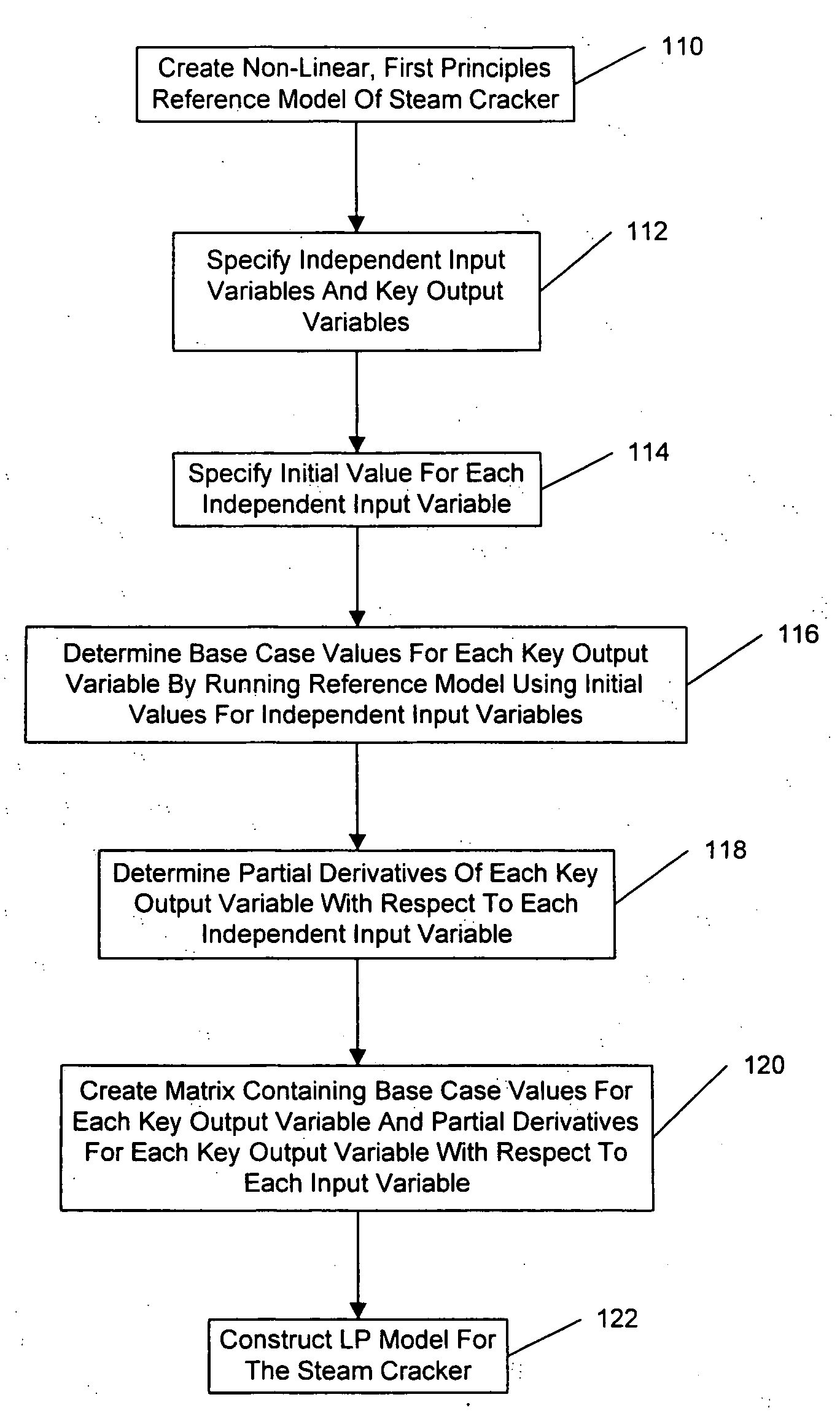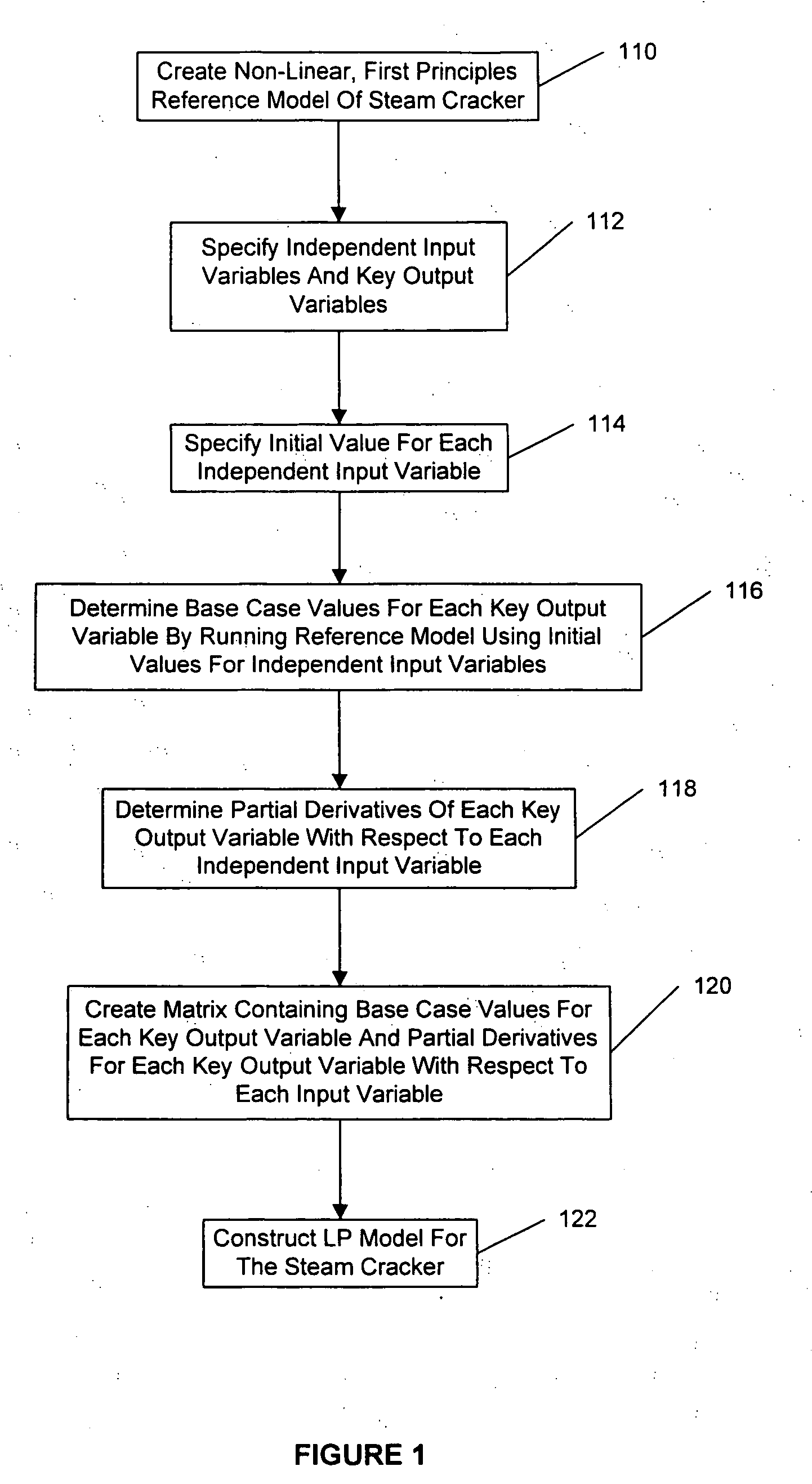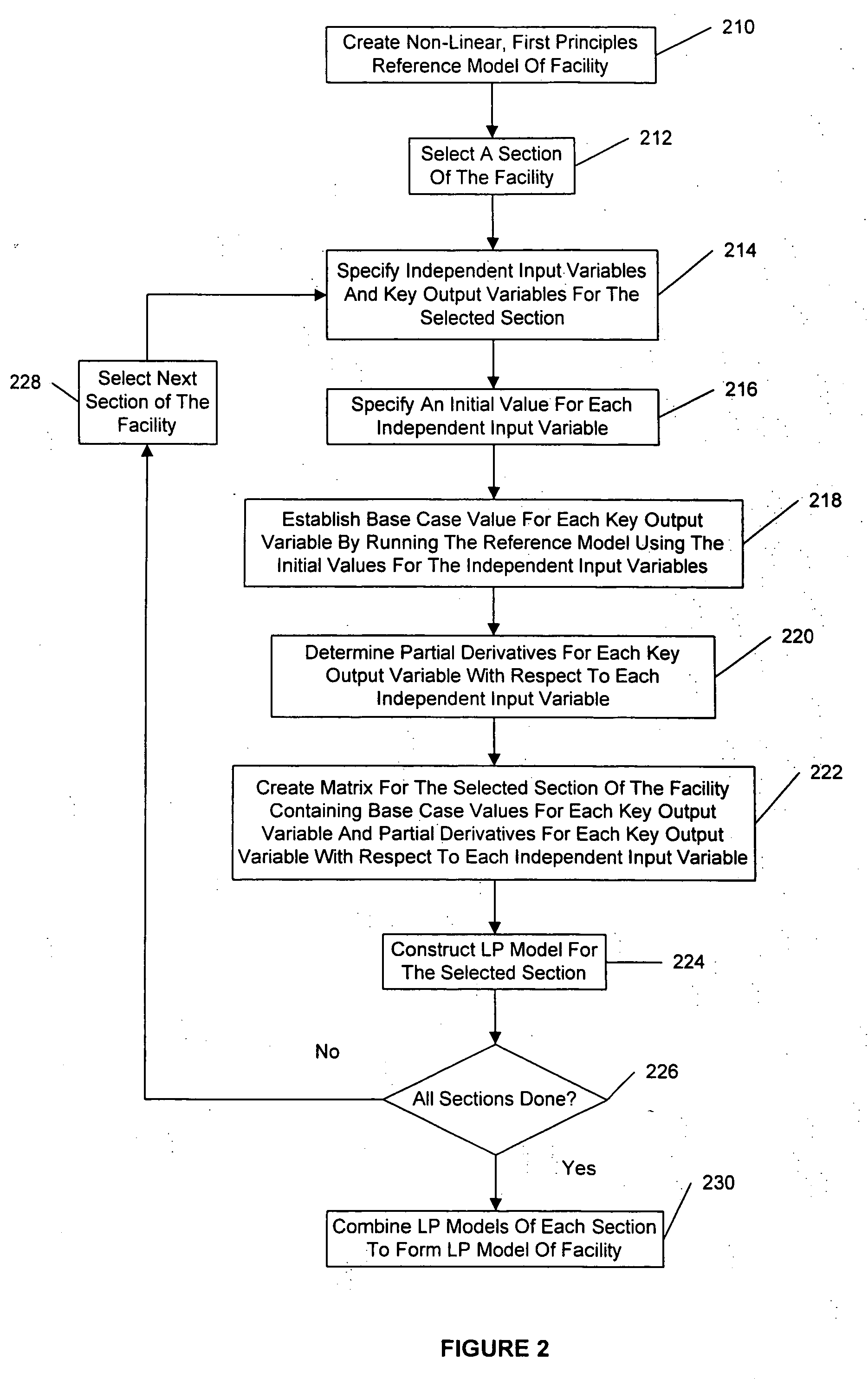Method for creating a linear programming model of an industrial process facility
a technology of industrial process and linear programming, applied in the direction of adaptive control, instruments, solidification, etc., can solve the problems of large computer time and resources required to run a model, the difficulty of effectively controlling and optimizing the operation of an industrial process facility, and the computational intensity of first principles reference models
- Summary
- Abstract
- Description
- Claims
- Application Information
AI Technical Summary
Benefits of technology
Problems solved by technology
Method used
Image
Examples
example
[0097] Following is an example of the use of the present invention to create a LP model of a steam cracker. For this example, the non-linear, first principles reference model of the steam cracker was constructed using the ROMeo® reference tool described above. Although typical steam cracker LP models may contain as many as 250 or more input variables and 1000 or more output variables, the example has been limited to 12 input variables and 15 output variables. It will be understood that this is for purposes of illustration only, and should not be construed or interpreted as a limitation on the scope of the invention.
[0098]FIGS. 4A and 4B show an LP matrix constructed according to the present invention for the example steam cracker. Turning first to FIG. 4A, the left hand column (column 410) lists the output variables. Column 410 is also reproduced as the left hand column on FIG. 4B for purposes of clarity. Note that column 410 also includes, in the bottom 12 rows, the 12 input varia...
PUM
 Login to View More
Login to View More Abstract
Description
Claims
Application Information
 Login to View More
Login to View More - R&D
- Intellectual Property
- Life Sciences
- Materials
- Tech Scout
- Unparalleled Data Quality
- Higher Quality Content
- 60% Fewer Hallucinations
Browse by: Latest US Patents, China's latest patents, Technical Efficacy Thesaurus, Application Domain, Technology Topic, Popular Technical Reports.
© 2025 PatSnap. All rights reserved.Legal|Privacy policy|Modern Slavery Act Transparency Statement|Sitemap|About US| Contact US: help@patsnap.com



